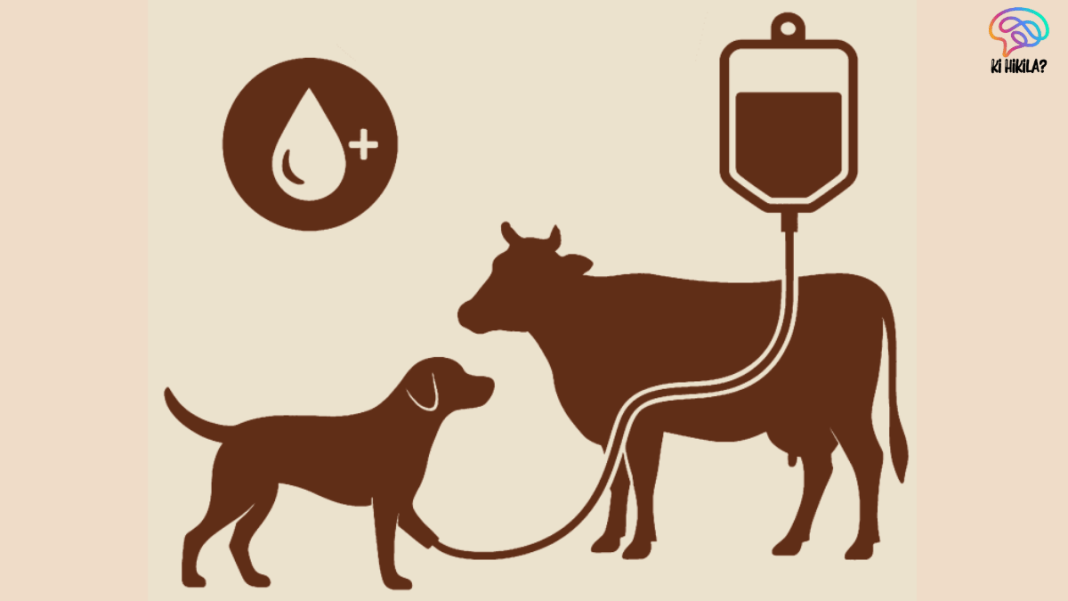Veterinary Blood Transfusion Guidelines are set to transform animal healthcare in India as the government proposes comprehensive standardised protocols for blood transfusion and blood banking in animals. This initiative aims to improve emergency and critical care for livestock and companion animals, ensuring safe, effective, and scientifically regulated transfusion practices across the country. The draft Standard Operating Procedure (SOP) establishes a framework for veterinary transfusion medicine, addressing long-standing gaps in donor selection, blood collection, storage, and transfusion safety.
Context and Need
India’s livestock population exceeds 530 million, encompassing cattle, buffalo, goats, sheep, and other species, while companion animals, including dogs and cats, number around 125 million. The animal husbandry and dairying sector contributes approximately 30% of agricultural Gross Value Added (GVA) and 5.5% of the national economy.
Despite this large animal population, veterinary blood transfusion practices remain largely unregulated, inconsistent, and dependent on hospital-available or client-owned donors. The absence of national standards often leads to transfusion reactions, compromised donor safety, and inadequate emergency support. By proposing Veterinary Blood Transfusion Guidelines, the government seeks to formalise protocols, improve emergency care, and reduce risks during trauma, anaemia, surgery, infections, and coagulation disorders in animals.
Current Challenges
Presently, blood transfusions in veterinary settings rely heavily on informal procedures. Donors are often selected without proper health screening or blood typing, raising risks of transfusion reactions and infections. Storage conditions, processing methods, and monitoring procedures vary widely, leading to inconsistent outcomes.
The draft SOP aims to close these gaps by providing ethical, scientific, and operational standards, ensuring safe and effective transfusions nationwide.
Animal Blood Volume and Blood Group Systems
Understanding species-specific blood volumes and blood group systems is critical for safe transfusions. Blood volume in animals ranges from 7% to 9% of body weight. For example, a 300 kg cow has roughly 16.5 litres of blood, calculated at 55 ml per kg. Dogs, horses, goats, sheep, pigs, and cats have blood volumes ranging between 55 ml and 86 ml per kg.
Animal blood groups are species-specific, with cattle having 11 groups, dogs 9, horses 8, and cats 4. Blood typing before transfusion is essential to avoid adverse reactions, emphasizing the need for standardised practices outlined in the Veterinary Blood Transfusion Guidelines.
Criteria for Donor Animals
Donor animals must meet strict health criteria. They should be clinically healthy and free from transmissible diseases such as tick-borne infections. Dogs eligible for donation must be 1–8 years old and weigh at least 25 kg, while cats must be 1–5 years old and weigh at least 4 kg. Livestock donors must comply with species-specific health norms, including vaccination, regular deworming, and overall fitness.

Pregnant or recently lactating female donors are not permitted, and donation frequency is regulated: dogs may donate every 4–6 weeks, cats every 8–12 weeks, with a minimum 30-day interval between donations. These measures ensure donor safety while maintaining an adequate blood supply.
Establishment and Operation of Veterinary Blood Banks
Veterinary blood banks will be established in veterinary colleges, referral hospitals, diagnostic centres, and multi-speciality animal hospitals, operating 24/7. Comprehensive records of donor registration, health screening, blood collection, processing, storage, transfusion monitoring, and biosafety will be maintained for at least five years.
National Veterinary Blood Bank Network and Digital Integration
A National Veterinary Blood Bank Network (N-VBBN) will coordinate blood banks across the country. This network will maintain a digital registry of donors, including species, breed, location, and blood type. Real-time inventory management will track blood availability, while a helpline and online portal will connect clinics, hospitals, and donors during emergencies. Future integration of mobile applications will facilitate donor-recipient matching, streamlining logistics and enhancing emergency response.
Ethics in Blood Donation
The SOP emphasizes ethical practices by prohibiting monetary incentives for animal blood donations. Voluntary, non-remunerated donations will form the foundation of the system, and owner consent is mandatory for each donation. This ethical framework aligns with global best practices in veterinary transfusion medicine and ensures the humane treatment of donor animals.
Conclusion
The introduction of Veterinary Blood Transfusion Guidelines marks a significant step forward in India’s veterinary healthcare system. By standardizing procedures, establishing blood banks, integrating digital networks, and enforcing ethical protocols, these guidelines promise safer, more reliable blood transfusions for both livestock and companion animals. This initiative not only enhances emergency care but also strengthens India’s commitment to scientific and ethical veterinary practices, ensuring healthier animals and a more resilient animal husbandry sector.



